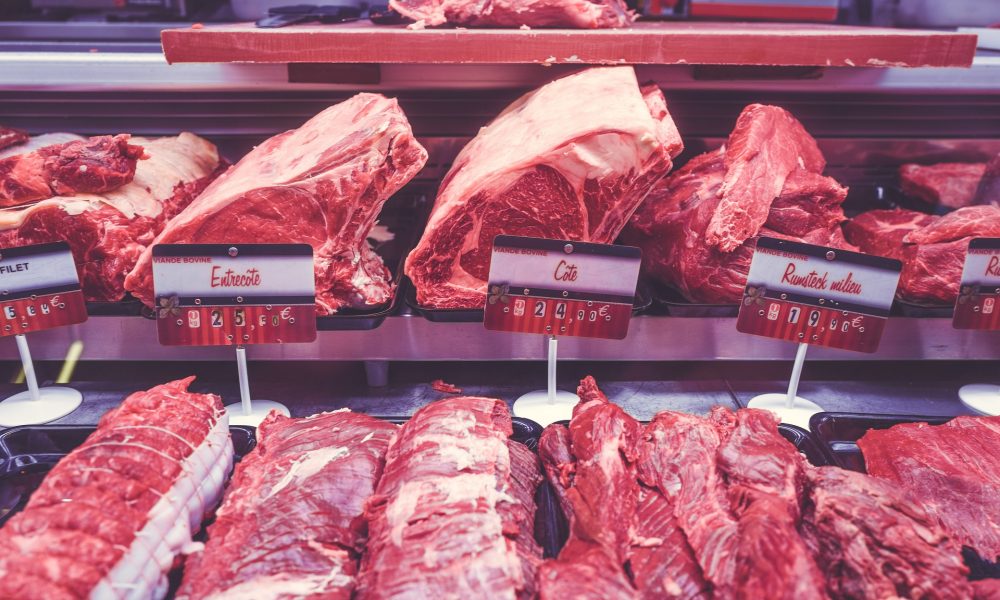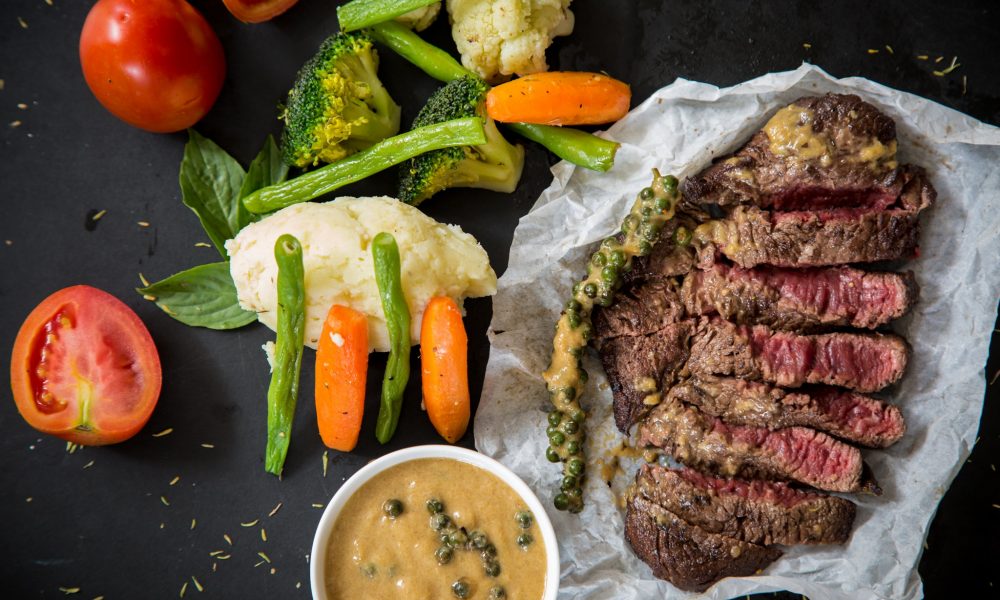
The Best Lifting Tempo For Hypertrophy
Understanding tempo is like understanding females, guys think they know what they’re doing, but they don’t. For those that don’t know, tempo is how fast you lift and lower your reps.

Red meat has been the blame for bad health for decades now. Apparently, eating a mammal’s nutrient dense flesh is going to infect your body, give you cancer, and put you in a grave before you meet your grandchildren.
If you didn’t catch my sarcasm in the last sentence, I’m alluding to the fact that red meat isn’t as bad as you’ve been taught to think. In fact, it’s probably not that bad at all. And while I’m quite the steak enthusiast, you don’t have to take my word for it.
Let’s dissect the research together to see the honest verdict on red meat.
When talking about red meat, I’m referring to the muscle tissue of mammals. Beef is an obvious example, but this also includes pork, lamb, veal, goat, or any Bambi like game meat you can think of.
Moreover, I’ll be calling minimally processed red meat, unprocessed and heavily processed red meat, processed. You can think of processed red meat as meat that’s been significantly altered through salting, curing, fermentation, or smoking (1). These distinctions are crucial for context and simplicity. In reality, all meat is processed to some extent, so truly unprocessed meat won’t ever enter your mouth unless you’re a farmer.
If I say red meat without distinction, I’m referring to both processed and unprocessed. Ok, now time for the article!
Red meat has accumulated a horrendous reputation despite being quite innocent. Red meat’s undeserved reputation starts with it’s perceived saturated fat content. While some cuts do contain higher ratios of saturated fat than other protein sources, saturated fat is not something to worry about in an overall healthy and calorically reasonable diet as I’ve discussed in the past. Same goes with the tag along nutrient of cholesterol.

So the fat content or even the nutrient content isn’t the concern with red meat. In fact, red meat is extremely nutrient dense providing rich amounts of nutrients commonly deficient in people like protein, zinc, high quality iron, B vitamins, and more.
The concern with red meat comes from 3 specific factors that do have some truth to them:
Red meat possesses carcinogenic properties meaning it has the potential for cancer to form (2,3,4,5). This risk also increases with heavy charring or frying (6,7,8). However, practically speaking, the overall risk is low because red meat also possesses anti-carcinogenic properties (29).
On a similar note, you’re exponentially more likely to die from alcohol or tobacco use as opposed to red meat (1).
The world health organization has even declared red meat’s carcinogenic relationship as associations at best and not causal (1). This means there’s a link probably due to other contributing factors instead of a direct cause.
I mean, think about it. If red meat independently caused cancer, everyone biting into a hot dog at a football game would be administered to the hospital before the final touchdown.
The link between red meat and cancer exists because people who tend to eat more red meat also tend to simply eat too much food, smoke/drink more, eat minimal vegetables, and exercise less (9,10). And yet headlines decide to blame red meat when people get cancer? Go figure.

Furthermore, beyond simply living a healthy lifestyle, you can also counteract red meat’s carcinogenic properties with anti-carcinogenic pairings by doing the following:
The second knock on red meat is the heme iron in it although all animal products contain heme iron like poultry and fish.
Nonetheless, iron as a whole is one of the more interesting micronutrients. Getting too little can diminish health and getting too much can increase your risk of certain diseases, particularly colon related (18,19,20).
Heme iron is the best source of iron in terms of bioavailability (absorption) and absolute amount. This is why it’s often linked to iron toxicity because to overdose on iron, it’s realistically only going to happen from eating too many animals carcasses not leafy greens. However, red meat is far from the highest sources of heme iron especially compared to shellfish and poultry organs, but it seems red meat still poses the greatest risk at least in observational studies (25).
Nonetheless, it’s quite difficult to even reach risky levels of heme iron or total iron in most people considering iron is one of the biggest deficiencies in the world especially in women and children (26). Children rarely get enough and women’s iron needs are significantly greater than men, especially when menstruating, pregnant, or lactating.

On top of this, athletes have even higher needs and thus are more likely to be deficient (27,28).
So while heme iron is riskier in red meat and overconsuming iron can be a concern in sedentary men, it’s usually extremely difficult to overdose in most populations.
The upper tolerable limit in average adults is 45 mg per day which is about 7 ribeye steaks (21). Furthermore, Heme also denatures when warm (like during cooking) and is discarded quickly from your blood (22,23,24). Additionally, calcium may play a protective role against heme (20). Overall, excess heme iron shouldn’t be a concern, but you can always get bloodwork to be safe.
Many headlines will tell you studies prove red meat is life threatening, but these are only epidemiological studies.
Epidemiology studies can’t actually prove anything. They don’t control for variables and simply observe populations thus causation can’t be drawn from them.
Red meat seems bad in these studies because as I mentioned earlier, people eating red meat also tend to live unhealthy lives as well.
It’s no surprise red meat is correlated with many health issues especially associated with processed red meat like commonly consumed hot dogs and fast food burgers (30,31,32,33,34).
In fact, epidemiology also reveals red meat only appears bad when you don’t account for veggie intake (43,44). Unless you’re doing the idiotic carnivore diet, you eating a varied well balance diet alongside red meat is fine.

When looking at more controlled, comprehensive, and higher quality recent studies, a more accurate picture is painted.
So now that steaks and chops have been pardoned from their evil reputation, here are the key takeaways:
Granic . “Myoprotective Whole Foods, Muscle Health and Sarcopenia: A Systematic Review of Observational and Intervention Studies in Older Adults.” Nutrients, U.S. National Library of Medicine, pubmed.ncbi.nlm.nih.gov/32731580/.
Dobersek, Urska. “Meat and Mental Health: A Meta-Analysis of Meat Consumption, Depression, and Anxiety.” Taylor & Francis, https://www.tandfonline.com/doi/full/10.1080/10408398.2021.1974336.
Sign up for AwesomeFitnessScience Weekly. You’ll get juicy insider secrets, updates, and stories.

Understanding tempo is like understanding females, guys think they know what they’re doing, but they don’t. For those that don’t know, tempo is how fast you lift and lower your reps.

Look, we live in some unsettling times right now. People are dying, supplies are scarce, and unemployment is skyrocketing, but none of that compares to the biggest nightmare nobody thought would happen. The gym is closed.

What if I told you about a strength training technique that pops your veins out, gets your arteries choked, and imposes a burning sensation hotter than Katy Perry wearing a sundress squeezing you on a summer’s day?